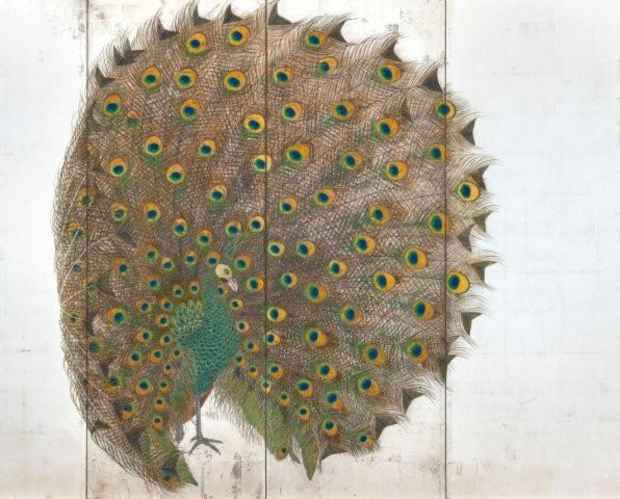"Screens and Scrolls of the Taisho Period" Exhibition
Erik Thomsen LLC Asian Art

This event has ended.
ERIK THOMSEN ASIAN ART is launching its 25th Anniversary Year in a new gallery at 23 East 67th Street. Thomsen has chosen the short but important Taisho Period (1912-1926) as the subject of his inaugural show, SCREENS AND SCROLLS OF THE TAISHO PERIOD. More than a dozen newly discovered screens and scroll paintings from that period will be on view from October 1 – November 19, including one monumental pair of screens by Ishizaki Koyo which measures 32 feet across. The Taisho show is the first in an anniversary year series of shows featuring important Japanese fine art.
A Preview of the Taisho show will be held at the new gallery between September 15 – October 1 to coincide with ASIA WEEK IN NEW YORK.
“Our new gallery is a purpose-built space in a newly renovated townhouse between Madison and Fifth Avenues,” Thomsen says. “It doubles our previous wall space, allowing us to better show large screen pairs and paintings, and the temperature and humidity controls conform to museum standards. The building is conveniently located one block from the Park Avenue Armory, just off the corner of 67th Street and Madison Avenue, and unlike our previous galleries, there are no entry steps to the elevator, making access from the street easier for visitors.
“While short in duration, the influential Taisho Period (1912-1926) witnessed a flowering of the arts in Japan. It was a period of great wealth, especially for the Zaibatsu industrialists, and art was eagerly collected. Artists were often sponsored by wealthy patrons and could afford to work on a single painting or work of art for a whole year or longer. Their goal was to exhibit a work at one of the annual national art exhibitions, which have been sponsored by the Japanese government since 1907.
“Screens and scroll paintings from the Taisho Period show influence from the West but are painted in traditional ways. Often over-sized exhibition pieces with a bold design, they are made using the finest materials and mountings. Unlike the preceding Meiji Period (1868-1912), during which art was made almost entirely for export to the West, art in the Taisho Period was made for the Japanese and rarely left Japan. This new trend continued in the following Showa Period (1926-1989) until the War.
“Since few Taisho and early Showa screens left Japan, little was known about them in the West until the acclaimed 2002 exhibition “Taisho Chic” at the Honolulu Academy of Arts. Our fall exhibition, SCREENS AND SCROLLS OF THE TAISHO PERIOD will focus on more than a dozen—many newly discovered—screens and scrolls of the Taisho period.
The arts in Japan blossomed during the Taisho period. It was evident in all five areas in which we specialize: painted screens and scrolls, ceramics, bamboo and lacquer ware. Artists incorporated Western elements and techniques, and influences of Art Deco can often be seen.”
[Image: Usumi Kiho Left side of "THE RAVEN AND THE PEACOCK" (1920) Taisho pair six panel screens ink mineral colors lacquer gold silver and gofun on silver leaf]
Media
Schedule
from October 01, 2010 to November 19, 2010
Opening Reception on 2010-10-14 from 18:00 to 20:00
Artist(s)
Ishizaki Koyo, Usumi Kihō et al.